Your guide to poison ivy, oak and sumac
Medically reviewed by Dr. Betsy Koickel, MD on July 30th, 2025.
Poison ivy, poison oak and sumac are plants that produce an oil called urushiol, which can irritate the skin. As a group, these oils are known to cause a condition known clinically as contact dermatitis, characterized by a red, raised, blistering, itchy rash.
If you plan on spending time outdoors in an area where these plants are present, here are some facts to know about how to reduce exposure and improve symptoms if you do get exposed.
Identifying poison ivy, poison oak, and sumac
If you are in a wooded area, here is how to identify each of these plants:
What does poison ivy look like?
A common phrase about how to identify poison ivy is “leaves of three, let it be”. It is known for its three leaves, but here are some other characteristics:
- Grows as a vine or low shrub
- Leaf colors are green, red or yellow
- Three glossy, almond-shaped leaflets per stem
- The middle leaf is on a longer stem
- Pointed or rounded leaf ends
- No thorns
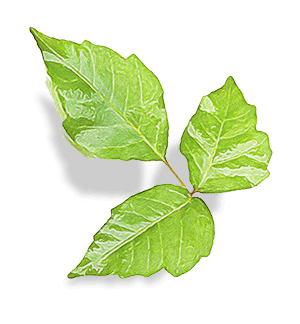
Where does poison ivy grow?
Poison ivy grows throughout most of the United States, especially in the Midwest, Northeast, and Southeast. It can be found in wooded areas, forest edges and trails. Depending on the location, it can be a climbing vine, low-growing ground cover or a small shrub.
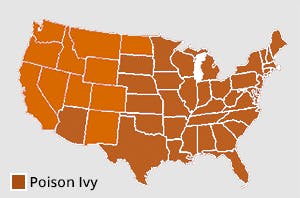
What does poison oak look like?
Similar to poison ivy, poison oak also has three leaves, but its leaves look more like an oak tree. Other characteristics include:
- Grows as a shrub or climbing vine
- Three leaflets
- Leaves look like oak leaves
- Scalloped, rounded or toothed-edged leaves
- Vine-like stems
- May have yellow or green flowers and fuzzy green berries
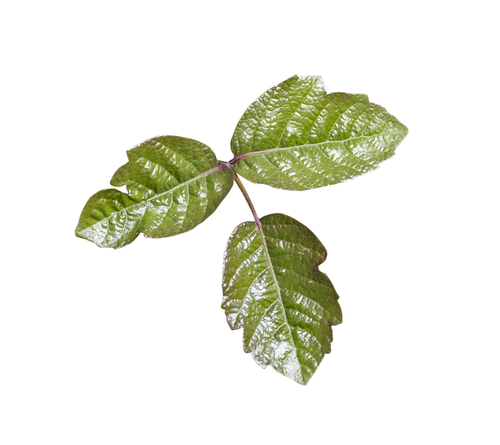
Where does poison oak grow?
Poison oak is found in the Western and Southeastern United States. It typically grows in dry, sunny locations such as grasslands and forest edges. In the West, it climbs like a vine, while in the Southeast it is a dense shrub.
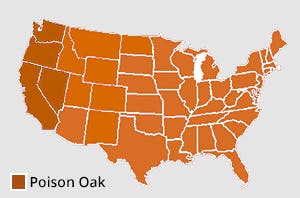
What does poison sumac look like?
Poison sumac is different from the other two in that it doesn’t have three leaves. Here are some of its characteristics:
- Grows as a tall shrub or small tree (up to 20 feet)
- 7 to 13 leaflets per stem, arranged in pairs with one at the end
- Long, tapered leaves
- Leaves are smooth-edged and or wavy
- Green or yellow flowers with green berries
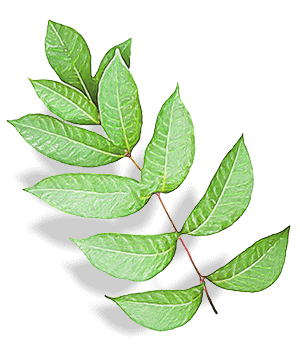
Where does poison sumac grow?
Poison sumac grows in wet or swampy areas and is most commonly found in the Southeastern U.S., especially in states like Florida, Georgia and the Carolinas. It is rarely found in dry areas, making it less common than poison ivy or oak.
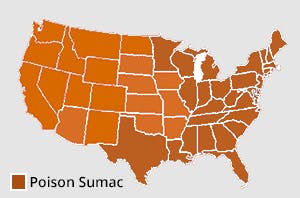
What are the symptoms of poison ivy, oak, and sumac?
Contact with these plants causes an itchy, red rash. When you come into contact with one of these plants, you will only develop a rash if you are allergic to the urushiol oil.
Once exposed, you often won’t notice any difference in your skin for at least a day. The rash typically appears 24-72 hours after exposure.
The rash is not contagious and does not spread. Although it might seem to spread, this is a delayed reaction to oil contact.
What does a poison ivy or poison oak rash look like?
The red rash that develops after exposure is called dermatitis. Symptoms include:
- Red, itchy patches
- Small bumps or raised blisters that may ooze clear fluid
- A streaky or linear pattern, if the plant brushes across the skin
- Swelling and warmth in the affected area
- In severe cases, large blisters or widespread redness
When to seek medical treatment from GoHealth Urgent Care
Exposure to poison ivy, oak or sumac can be quite uncomfortable. Our urgent care team can help ease symptoms. Seek immediate medical treatment if you experience a more severe reaction, such as:
- Much of your skin itches or nothing seems to ease the itch
- Rash covers the majority of your body
- Rash develops anywhere on your face or genitals
- Swelling, especially if an eyelid swells shut
- Trouble breathing or swallowing
- You have many rashes or blisters
No matter what symptoms you are experiencing, we are here to help. To get started, find the center nearest you and walk in or save your spot online.
How to prevent exposure to poison ivy, oak and sumac
Since these plants are common across North America, it’s hard to avoid coming into contact with them when you’re camping, hiking, gardening or enjoying outdoor activities.
So, if you are going to be outside, the first line of defense is to cover as much skin as possible. By wearing long-sleeved shirts and long pants and wearing gardening gloves when you’re working outdoors, you can prevent the plants from coming into contact with your skin.
FAQs
Here are some frequently asked questions about poison ivy, oak and sumac.
Is a poison ivy rash contagious?
No, the rash itself is not contagious. However, urushiol oil, the cause of the rash, can linger on skin, clothes, gear or pet fur and spread if touched.
How long does a poison ivy rash last?
The rash typically lasts 1 to 3 weeks, although severe cases may last longer.
What's the main difference in appearance between a poison ivy rash and a poison oak rash?
Both rashes may look similar, but the main difference between a poison oak vs poison ivy rash is the inflamed blisters caused by poison oak. Poison ivy often appears in streaks or lines.
Can I get poison ivy from my dog?
Yes, if urushiol oil is on your dog’s fur and you touch it, you can get a rash. But dogs themselves usually don’t react to it.
Where does poison ivy not typically grow?
It’s rare in deserts, high elevations and the far West. like California and Nevada. Instead, poison oak is more common in those areas.
References:


